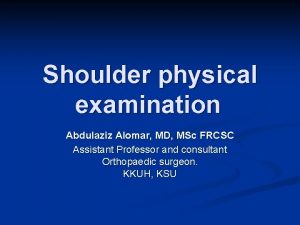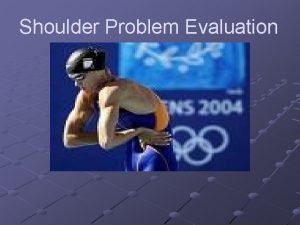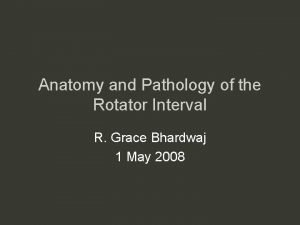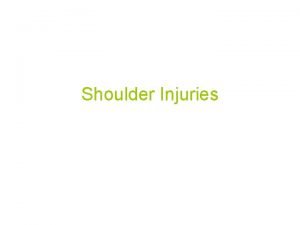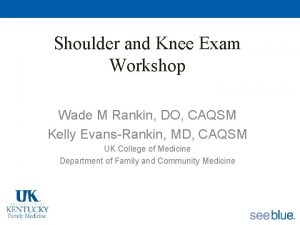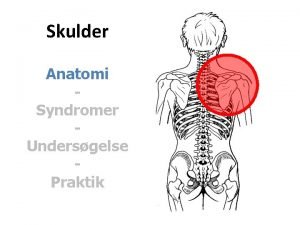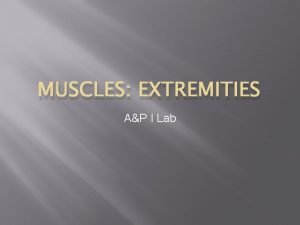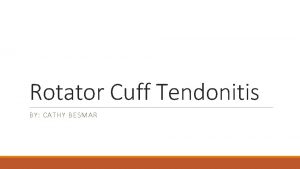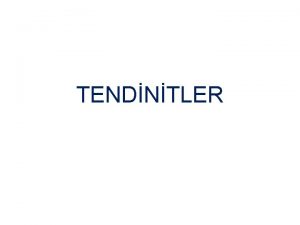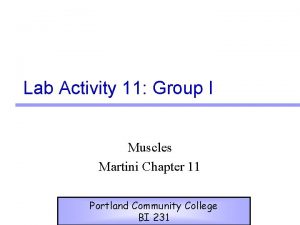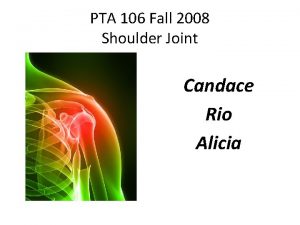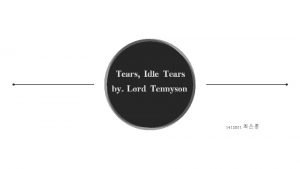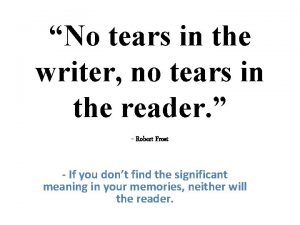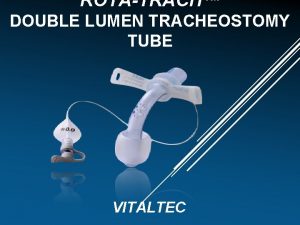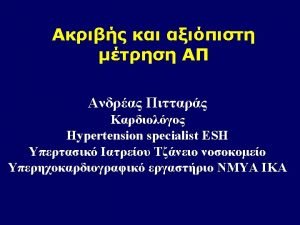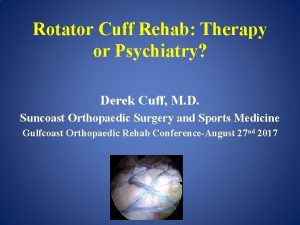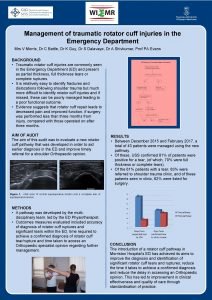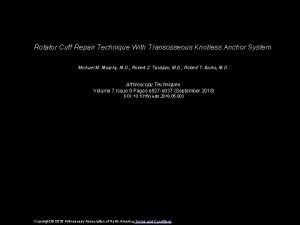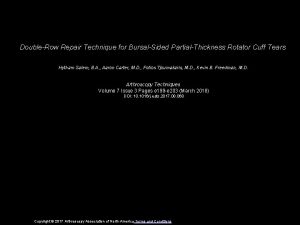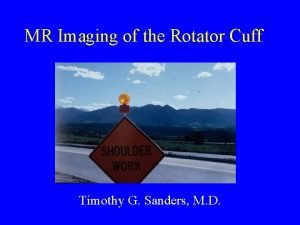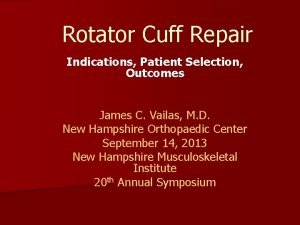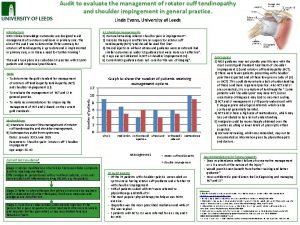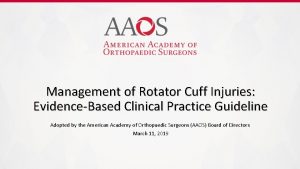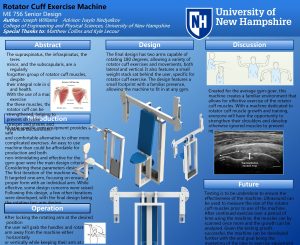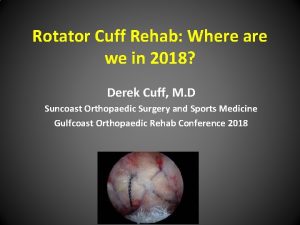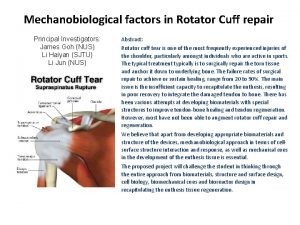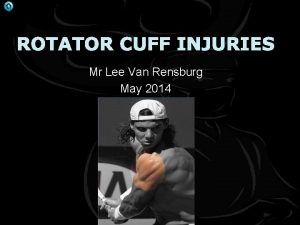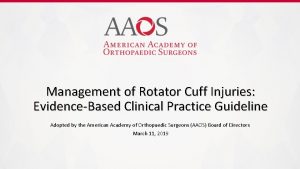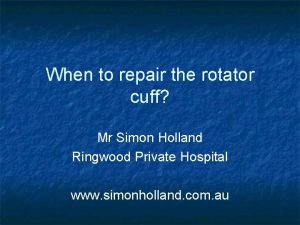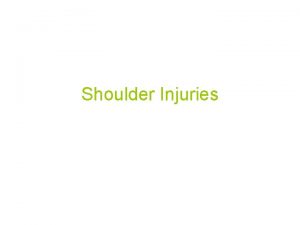Rotator Cuff Tears Thomas J Kovack DO Rotator


















- Slides: 18

Rotator Cuff Tears Thomas J Kovack DO

Rotator Cuff Tears

Anatomy n 4 Muscles 1 in front n 1 on top n 2 behind n

Impingement

Rotator Cuff Tears

What we know… n Rotator Cuff Tears are common n By age of 60 over 50% of people have a tear n Most tears are degenerative tears n Some are traumatic n Larger tears have loss of greater shoulder function

What we know… n Rotator Cuff Tears do not heal on their own n Rotator Cuff Tears get larger over time n Some patients with rotator cuff tears do not have pain n Many patients will eventually have pain (Yamagucci, JSES 2001)

Non-operative Treatment n n n n Anti-inflammatory Medications Physical Therapy Cortisone Injections* Modification of activities 60 -70% will show some improvement Best for low demand patients Rotator cuff will not heal Bartolozzi et al (CORR 1994), Hawkins & Dunlop (CORR 1995)

Activity Levels Decision of surgery based on activity level n “Age” is relative to activity level n Goals of high activity levels n Need maximal function from rotator cuff n Consider surgery earlier n

Surgical Treatment n Options n Surgical Treatment – Rotator Cuff Repair n Opportunity to heal tendon n Arthroscopic surgery n Outpatient n Well-tolerated n Small-medium size tears have 90 -95% chance of improvement (Wolf, Arthroscopy 2004) (Gartzman, JBJS, 1998) (Tauro, Arthroscopy, 1998)

Challenges n What makes successful repair more difficult n Smoking n Diabetes n Large/Massive rotator cuff tears n 88 -95% improvement Savoie (Arthroscopy 2003), Burkhart et al (Arthroscopy 2001) n Recurrent tears n Multiple Cortisone Injections (Watson JBJS 1985)

Arthroscopic Rotator Cuff Repair n Small incisions n Arthroscope n Under Water

Arthroscopic Repair

Post-operative Rehabilitation n Phase 1 (0 -6 weeks) Shoulder Immobilizer n Pendulum exercises only n Pool therapy n

Post-operative Rehabilitation n Phase 2 (6 -12 weeks) Stretching n Sling when out of house n Begin to use arm n n Golf put, no swing n No lifting

Post-operative Rehabilitation n Phase 3 (3 months+) More vigorous activities n No strength training until 6 months n

Complications n Rotator Cuff Re-tear n 29% (Boileau et al JBJS 2005) Stiffness n Infection n Arthritis n Nerve Injury n Suture or Anchor related complications n Anesthesia risks n

Appointments Pre-operative Visit n Post-operative Visit (1 week) n 1 st Follow-up (6 weeks) n 2 nd Follow-up (12 weeks) n 3 rd Follow-up (6 months) n 4 th Follow-up (1 year) n Annual Visits n
 Rotator cuff examination
Rotator cuff examination Rotator cuff sits
Rotator cuff sits Glenohumeral ligament attachment
Glenohumeral ligament attachment Rotator cuff anatomy
Rotator cuff anatomy Empty can test
Empty can test Isometrisk abduktion
Isometrisk abduktion Pectoralis major prime mover
Pectoralis major prime mover Rotator cuff tendinitis
Rotator cuff tendinitis Rotator cuff kasları
Rotator cuff kasları Infraspinatus muscle
Infraspinatus muscle Rotator cuff innervation
Rotator cuff innervation Tears idle tears themes
Tears idle tears themes Ulysses 해석
Ulysses 해석 심연/despair scan
심연/despair scan Tears, idle tears
Tears, idle tears No tears in the writer no tears in the reader
No tears in the writer no tears in the reader Break break break 해석
Break break break 해석 Double lumen tracheostomy tube
Double lumen tracheostomy tube Cuff bladder length
Cuff bladder length
